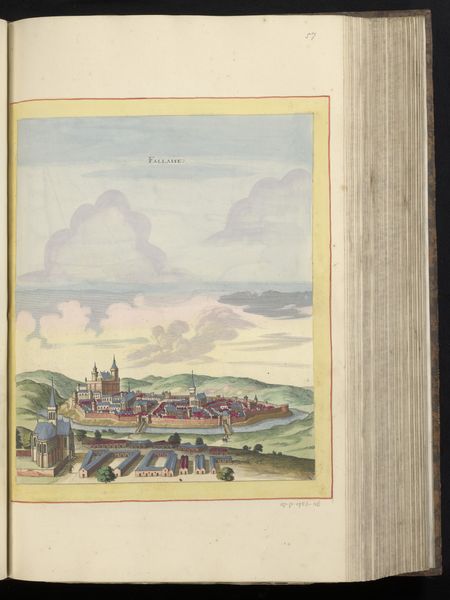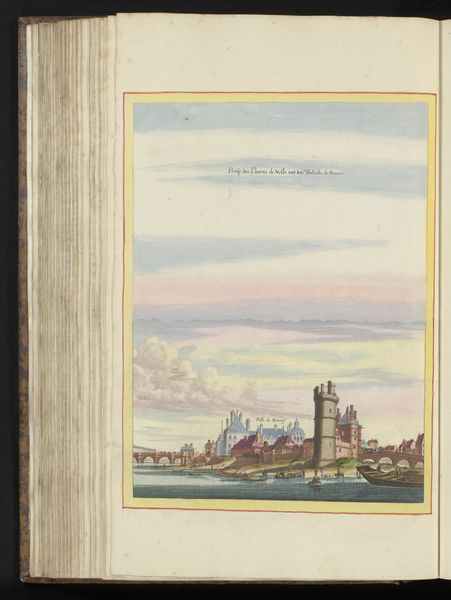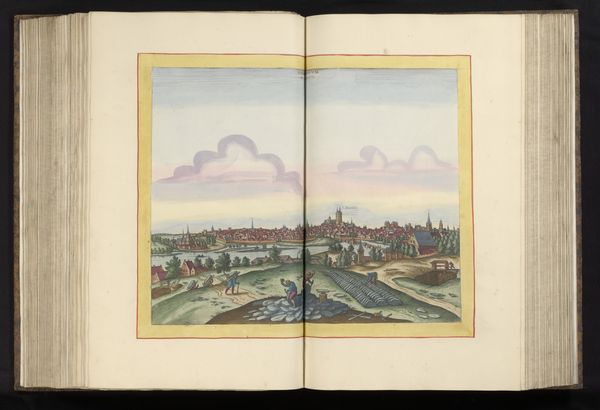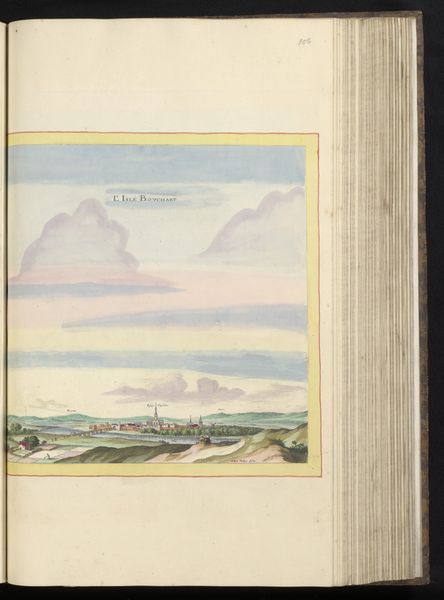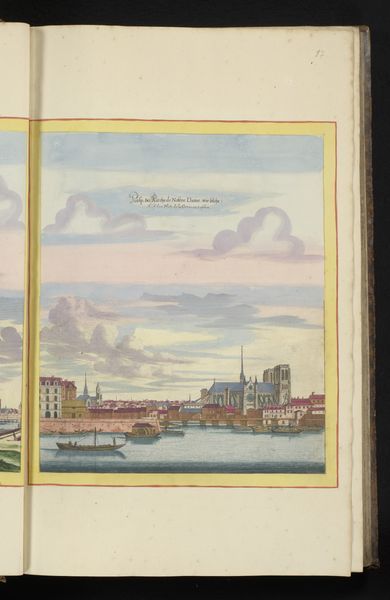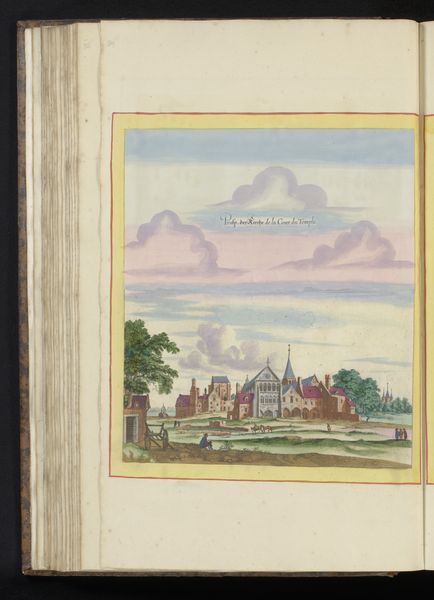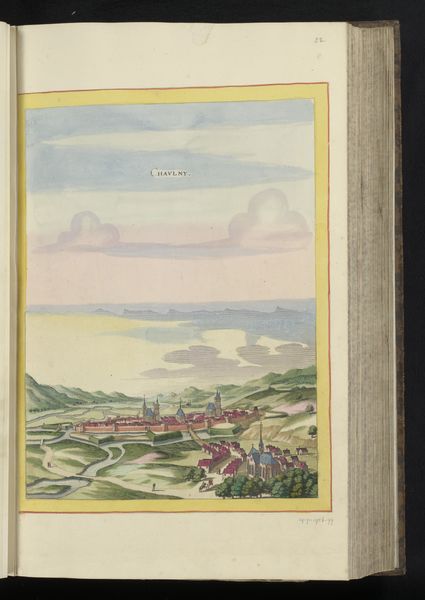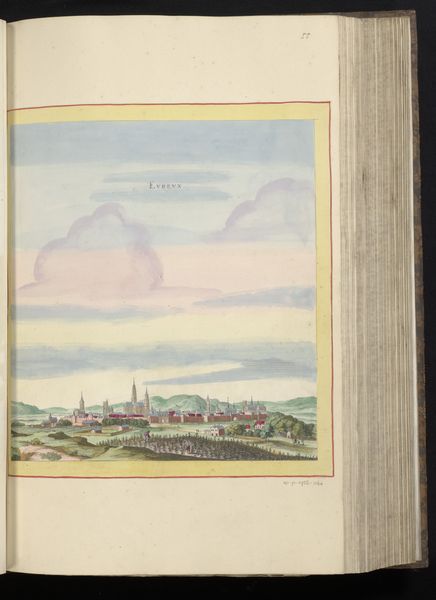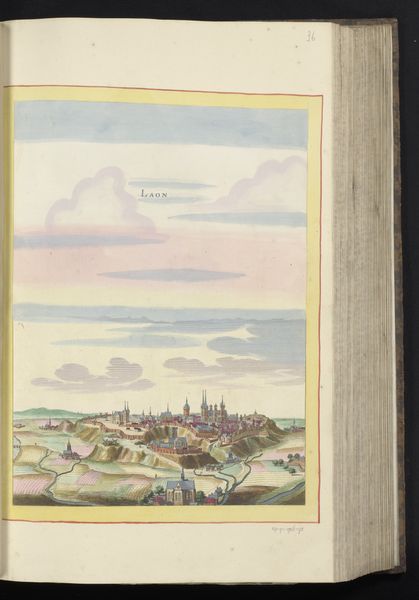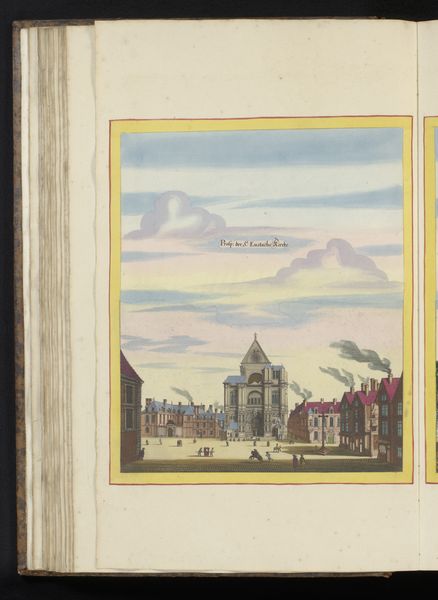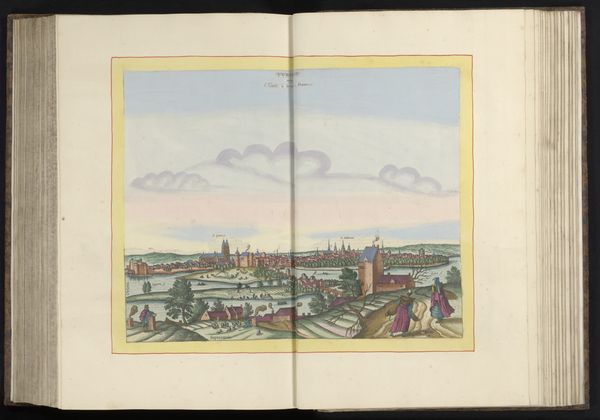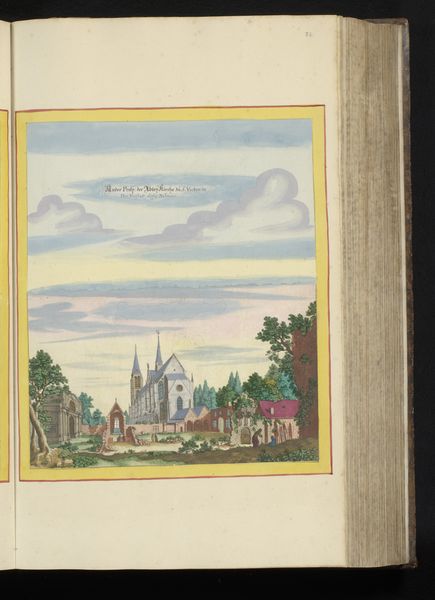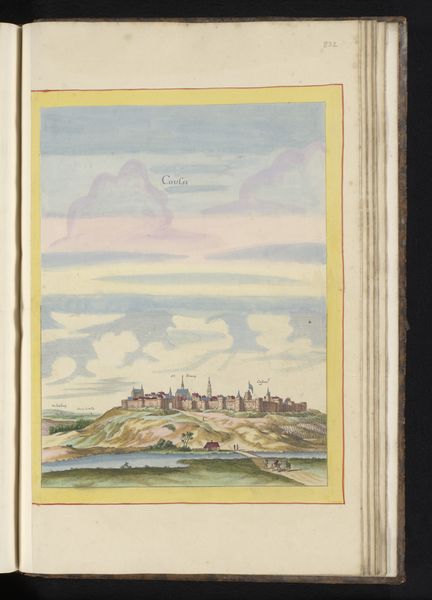
Gezicht op de zijkant en het koor van de Notre-Dame te Parijs 1655
0:00
0:00
matthausiimerian
Rijksmuseum
drawing, coloured-pencil, print, etching, intaglio, paper, pen
#
drawing
#
coloured-pencil
#
baroque
# print
#
etching
#
intaglio
#
landscape
#
paper
#
coloured pencil
#
pen
#
cityscape
Dimensions: height 333 mm, width 279 mm, height 534 mm, width 330 mm
Copyright: Rijks Museum: Open Domain
Curator: Here we have Matthäus Merian the Younger's "View of the Side and Choir of Notre-Dame in Paris," crafted around 1655 using etching, pen, and coloured pencil on paper. There's a certain quaintness to it, wouldn't you agree? The coloration reminds me of hand-tinted engravings...almost mass produced ephemera. Curator: It strikes me as romantic, almost melancholic. The soft hues and detailed architecture give the impression of Paris viewed through rose-tinted glasses, idealized but also conscious of the historical weight and potential conflicts embedded in representations of power and faith. Curator: Indeed. This work stems from a period where printmaking served not just artistic expression, but as a key method for disseminating information, shaping perceptions of cities and power structures across Europe. We're observing a convergence of craftsmanship, commerce and ideology here. Etchings such as this, and other intaglio work, required specialized labor: the draftsmen, the engravers, the printers…a small cottage industry that speaks volumes about 17th century methods of visual reproduction and its access for public consumption. Curator: That's true, and the "access" element raises questions: for whom was this image made, and what kind of narrative did it promote? Depicting Notre-Dame so prominently inevitably calls into play the role of the church in French society, especially given the social stratification, religious persecution, and evolving political landscape during Merian's time. Did this romanticized version intentionally deflect from existing realities, maybe functioning as a form of soft propaganda? Curator: Propaganda might be too strong a word, but certainly this rendering participated in creating and solidifying a certain image of Paris. Considering the physical labor involved—the copper plate etching process and the application of color—the aim to standardize images across prints points to a burgeoning visual market, focused on efficient replications and wide circulation. Curator: Agreed, the marketplace consideration cannot be understated. Still, examining its reception then and now demands acknowledging the visual perpetuation of power dynamics inherent in images that frequently sanitized realities or even outright excluded large populations of the populace. We ought to analyze how images, like this of Notre-Dame, play in shaping collective memory. Curator: An insightful point about memory. The work underscores how printmaking played a pivotal role in forging shared cultural references across geographical divides. I leave contemplating questions around the conditions under which that common image was produced and disseminated. Curator: Indeed. This exploration hopefully urges all of us to remain vigilant about the layers beneath visually appealing facades and investigate the complexities of creation and cultural representation, throughout history and even today.
Comments
No comments
Be the first to comment and join the conversation on the ultimate creative platform.
